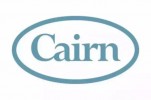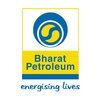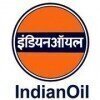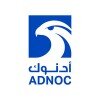Filter interviews by
GAIL Intern Interview Questions and Answers
GAIL Intern Interview Experiences
1 interview found
(1 Question)
- Q1. What is rtdand thermocouple
(1 Question)
- Q1. Why should we hire you?
Interview Preparation Tips
More learning
Top trending discussions






Interview questions from similar companies

I applied via Naukri.com and was interviewed before Jun 2020. There was 1 interview round.
Interview Questionnaire
28 Questions
- Q1. What is mean by safety
- Q2. What is LEL
- Q3. What is RA
- Q4. What is JSA/JHA
- Ans.
JSA/JHA stands for Job Safety Analysis/Job Hazard Analysis. It is a process of identifying potential hazards and risks in a job or task.
JSA/JHA is a systematic approach to identify and mitigate potential hazards in a job or task
It involves breaking down a job or task into steps and analyzing each step for potential hazards
The analysis includes identifying the hazards, assessing the risks, and implementing controls to m...
- Q5. Role of HSE
- Ans.
HSE plays a crucial role in ensuring the safety and well-being of employees and the environment.
HSE stands for Health, Safety, and Environment.
It involves identifying and assessing potential hazards and implementing measures to control or eliminate them.
HSE also includes training employees on safety procedures and emergency response plans.
Examples of HSE measures include wearing personal protective equipment, conductin...
- Q6. What is Hchem
- Ans.
Hchem is not a known term or acronym in the engineering field.
Hchem is not a commonly used term in engineering
It is possible that the interviewer misspoke or meant to ask a different question
Without more context, it is difficult to provide a more specific answer
- Q7. What is Hazop
- Q8. What is confined space
- Q9. What is work at height
- Q10. Hazard of confined space
- Ans.
Confined spaces pose a significant hazard due to limited entry and exit points, poor ventilation, and potential for hazardous substances.
Limited entry and exit points can make it difficult to escape in case of an emergency
Poor ventilation can lead to a buildup of toxic gases or lack of oxygen
Potential for hazardous substances such as chemicals, fumes, or dust
Examples include tanks, silos, sewers, and tunnels
Proper trai...
- Q11. Precautions of confined space
- Ans.
Precautions to be taken while working in confined spaces
Proper ventilation and air quality testing
Use of personal protective equipment
Proper lighting and communication equipment
Training and certification for workers
Emergency rescue plan in place
- Q12. What is LEL&UEL
- Q13. What is competent person
- Q14. What is fire
- Ans.
Fire is a chemical reaction that releases heat, light, and various gases.
Fire is a rapid oxidation process that occurs when fuel (such as wood, paper, or gasoline) combines with oxygen in the presence of heat or a spark.
It releases heat, light, and various gases such as carbon dioxide, water vapor, and nitrogen oxides.
Fire can be beneficial (such as for cooking or heating) or destructive (such as in wildfires or house ...
- Q15. Types of fire
- Ans.
There are four types of fire: Class A, Class B, Class C, and Class D.
Class A fires involve ordinary combustibles such as wood, paper, or cloth.
Class B fires involve flammable liquids or gases such as gasoline, oil, or propane.
Class C fires involve electrical equipment such as appliances, wiring, or circuit breakers.
Class D fires involve combustible metals such as magnesium, titanium, or sodium.
- Q16. Type of extinguisher
- Q17. Modes of heat transfer
- Ans.
Modes of heat transfer include conduction, convection, and radiation.
Conduction is the transfer of heat through a material without any movement of the material itself.
Convection is the transfer of heat through the movement of fluids, such as air or water.
Radiation is the transfer of heat through electromagnetic waves, such as from the sun or a fire.
- Q18. How to prevent fire
- Q19. What is msds
- Ans.
MSDS stands for Material Safety Data Sheet.
MSDS provides information about hazardous chemicals and substances.
It includes information about the physical and chemical properties of the substance, health hazards, precautions for safe handling and use, and emergency procedures.
MSDS is required by law for all hazardous chemicals and substances used in the workplace.
It is important to read and understand the MSDS before usi...
- Q20. How to do firefighting
- Ans.
Firefighting involves identifying and extinguishing fires to prevent damage and loss of life.
Assess the situation and determine the type and size of fire
Use appropriate firefighting equipment such as fire extinguishers, hoses, and pumps
Follow safety protocols and wear protective gear
Coordinate with other firefighters and emergency responders
Evacuate people from the affected area
Monitor the situation and ensure the fire...
- Q21. How to prevent the accident
- Ans.
Prevent accidents by identifying potential hazards and implementing safety measures.
Conduct regular safety audits and risk assessments
Provide proper training and education to employees
Implement safety protocols and procedures
Use appropriate safety equipment and gear
Encourage a culture of safety and accountability
Regularly review and update safety policies and procedures
- Q22. How to investigate the accident
- Q23. Emergency procedure
- Q24. What is H2s
- Ans.
H2S is a colorless, flammable, and toxic gas with a strong odor of rotten eggs.
H2S is commonly known as hydrogen sulfide.
It is produced naturally by the breakdown of organic matter and is found in natural gas, crude oil, and volcanic gases.
It is highly toxic and can cause respiratory failure, loss of consciousness, and even death.
H2S is used in various industries such as oil and gas, mining, and pulp and paper.
It is al...
- Q25. Properties of H2s
- Ans.
H2S is a colorless, flammable, and toxic gas with a strong odor of rotten eggs.
H2S is highly flammable and can ignite easily
It is toxic and can cause respiratory failure
It has a distinctive odor of rotten eggs
H2S is used in the production of sulfuric acid and in the petroleum industry
- Q26. Hirerchy procedure
- Q27. Permissible exposure limit of H2s,co,co2,methane
- Ans.
Permissible exposure limits (PEL) are the maximum allowable concentrations of hazardous substances in the workplace.
H2S: PEL is 10 ppm (parts per million) over an 8-hour workday
CO: PEL is 50 ppm over an 8-hour workday
CO2: No specific PEL, but recommended exposure limit is 5,000 ppm over an 8-hour workday
Methane: No specific PEL, but recommended exposure limit is 1,000 ppm over an 8-hour workday
- Q28. Short term exposure limit of H2s
- Ans.
Short term exposure limit (STEL) of H2S is 10 ppm.
STEL is the maximum concentration of a substance that a worker can be exposed to for a short period of time without suffering from immediate or long-term health effects.
The STEL for H2S is set at 10 ppm (parts per million) by OSHA (Occupational Safety and Health Administration).
Exposure to H2S at levels above the STEL can cause symptoms such as eye irritation, headache,...
Interview Preparation Tips

I applied via Recruitment Consultant and was interviewed in Dec 2020. There were 6 interview rounds.
Interview Questionnaire
2 Questions
- Q1. 1st round is technical , 2nd is values & behaviors , 3rd is assessment road
- Q2. Be clear on values & behaviours , practice assement round offline before attempting
Interview Preparation Tips

I applied via Company Website and was interviewed in May 2024. There were 2 interview rounds.
Behavioral questions and resume delve
Pmi - product management information
Interview Preparation Tips

Senior Engineer Interview Questions & Answers
Bharat Petroleumposted on 4 Dec 2021
I applied via Company Website and was interviewed in Nov 2021. There were 4 interview rounds.
Interview Questionnaire
2 Questions
- Q1. About work experience and responsibilities
- Q2. Why you are leaving to present job
Interview Preparation Tips

I applied via Naukri.com and was interviewed in Oct 2020. There were 3 interview rounds.
Interview Questionnaire
1 Question
- Q1. The HR round was very pathetic. Sreethala took my HR round.
Interview Preparation Tips
Mumbai location. They will take all the interview rounds. The HR will ask you to submit all documents and last moment they will cancel your candidature without giving you any specific reason.

I appeared for an interview in Apr 2017.
Interview Questionnaire
3 Questions
- Q1. Favourite sportsperson
- Ans.
My favourite sportsperson is Serena Williams.
Serena Williams is a professional tennis player
She has won numerous Grand Slam titles
She is known for her powerful serve and aggressive playing style
- Q2. How is crude oil separated from water?
- Ans.
Crude oil is separated from water through a process called oil-water separation.
Oil-water separation is achieved by using various techniques such as gravity separation, centrifugation, and filtration.
Gravity separation involves allowing the mixture of crude oil and water to settle, with the oil rising to the top due to its lower density.
Centrifugation utilizes the centrifugal force to separate the oil and water by spin...
- Q3. Questions about memberships in student societies and activities.
Interview Preparation Tips
Experience: On the basis of CGPA
Round: Technical + HR Interview
Experience: I was extremely nervous as this was going to be my first interview as a fresher. Adding to that, their first question was ' who is your favourite basket ball player?' as my CV mentioned that I used to play basketball in school-life. I just didn't know whether I should blabber an arbitrary name or give the honest answer. After giving the latter I was asked how crude oil is seperated from water. I told them that if some time is allowed then crude oil and water will be separated in two layers. Now I dont know why it seemed to me that crude oil having asphalts, coke should have greater specific gravity than water and should appear at bottom. After giving the answer, from their expressions I knew that I had screwed this as well. Now they asked some more teasing questions like why I had joined IIChE, how many meeting I had attended and so on and I don't remember the rest as I was close to tears by then.
Tips: At the end, one of the panelists gently told me 'Please don't be so much nervous from next time'.
College Name: Jadavpur University, Kolkata

I appeared for an interview in Apr 2017.
Interview Preparation Tips
Experience: They first asked me to tell me about myself. Then I was asked to briefly explain what I did in my internship at SAIL in summer'16.Then they asked a few technical questions on the project (Modelling of a bio refinery using Indian agrowastes for energy and environmental analysis) that I was doing in that semester under one of my professors. Then they asked me about my favourite subject to which I answered, "Heat Transfer". So they asked me some basic questions on heat exchangers and related graphs.
Then one of the HRs asked me to tell about my career objectives followed by a few other questions like my strength, why CAIRN, what I would have pursued if not engineering,which location would I prefer- Rajasthan(where there is main plant of CAIRN) or Gurgaon(where there is main office of CAIRN but no plant).
Then they asked me if I had any questions to ask to which I asked them a few internship related queries. And this way, the interview ended.
College Name: Jadavpur University, Kolkata

60 minute 60 questions
General topics were asked on how manufacturing sector getting affected
(2 Questions)
- Q1. Previous internship job related qns asked
- Q2. Situation when u faced adversity and how you fought it

I applied via Campus Placement
(1 Question)
- Q1. Tell me about yourself?
(1 Question)
- Q1. Ohm's Law, Bernoulli's Eqn, Hobbies, IC Engines
(1 Question)
- Q1. Basic hr questions.
GAIL Interview FAQs
Tell us how to improve this page.
GAIL Interviews By Designations
- GAIL Electrical Engineer Interview Questions
- GAIL Graduate Apprenticeship Trainee Interview Questions
- GAIL Electrical Technician Interview Questions
- GAIL Graduate Apprentice Interview Questions
- GAIL Senior Engineer Mechanical Interview Questions
- GAIL Senior Engineer Interview Questions
- GAIL Executive Trainee Interview Questions
- GAIL Diploma Electrical Engineer Interview Questions
- Show more
Interview Questions for Popular Designations
Interview Questions from Similar Companies
GAIL Intern Reviews and Ratings
based on 8 reviews
Rating in categories
|
Field Operator
107
salaries
| ₹1.8 L/yr - ₹5 L/yr |
|
Graduate Apprentice Trainee
87
salaries
| ₹2.4 L/yr - ₹3 L/yr |
|
Senior Engineer
72
salaries
| ₹15 L/yr - ₹25 L/yr |
|
Technician
65
salaries
| ₹1.6 L/yr - ₹4 L/yr |
|
Senior Officer
58
salaries
| ₹16 L/yr - ₹28 L/yr |

Indian Oil Corporation

Bharat Petroleum

Hindustan Petroleum

Petrofac
- Home >
- Interviews >
- GAIL Interview Questions











